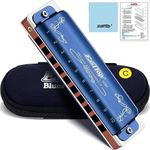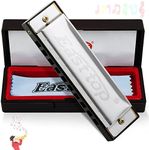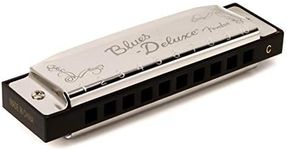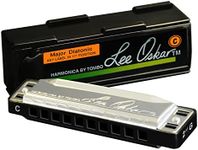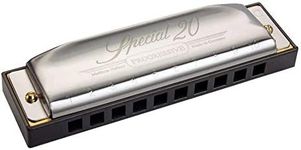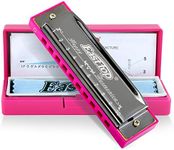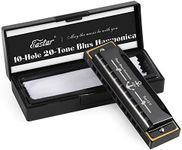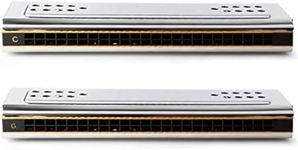Buying Guide for the Best Beginner Harmonicas
Choosing the right harmonica as a beginner can be a fun and rewarding experience. The harmonica is a versatile and portable instrument that can be used in various music genres. When selecting your first harmonica, it's important to consider several key specifications to ensure you get an instrument that suits your needs and helps you learn effectively. Here are some important factors to consider when picking a beginner harmonica.TypeHarmonicas come in different types, with the most common being diatonic, chromatic, and tremolo. Diatonic harmonicas are the most popular for beginners because they are simpler to play and are used in many music styles like blues, rock, and folk. Chromatic harmonicas have a button-activated slide that allows for playing all the notes in the chromatic scale, making them more complex and suitable for advanced players. Tremolo harmonicas have a unique sound due to their double reeds, but they are less common. For beginners, a diatonic harmonica in the key of C is usually recommended as it is the most straightforward to learn and widely used in instructional materials.
KeyThe key of the harmonica refers to the musical key in which it is tuned. Harmonicas are available in various keys, but the key of C is the most common and recommended for beginners. This is because most beginner lessons and instructional books are written for harmonicas in the key of C, making it easier to follow along and learn. As you progress, you can explore harmonicas in other keys to play different songs and styles.
Reed MaterialThe reeds in a harmonica are the thin metal strips that vibrate to produce sound. They can be made from different materials, with brass being the most common for beginner harmonicas. Brass reeds are durable and produce a bright, clear sound. Some higher-end harmonicas may use stainless steel or other materials, which can offer different tonal qualities and longevity. For beginners, brass reeds are a good choice due to their balance of sound quality and durability.
Comb MaterialThe comb is the main body of the harmonica, where the air channels are located. Combs can be made from plastic, wood, or metal. Plastic combs are the most common for beginners because they are durable, resistant to moisture, and provide a consistent playing experience. Wooden combs can offer a warmer tone but may require more maintenance to prevent swelling from moisture. Metal combs are less common and can be heavier. For beginners, a plastic comb is usually the best choice due to its ease of use and low maintenance.
Size and PortabilityHarmonicas come in various sizes, but most beginner harmonicas are designed to be compact and portable. A standard 10-hole diatonic harmonica is small enough to fit in your pocket, making it easy to carry around and practice anywhere. When choosing a harmonica, consider how comfortable it feels in your hands and how easy it is to play. A smaller, lightweight harmonica is generally more suitable for beginners as it is easier to handle and play for extended periods.
